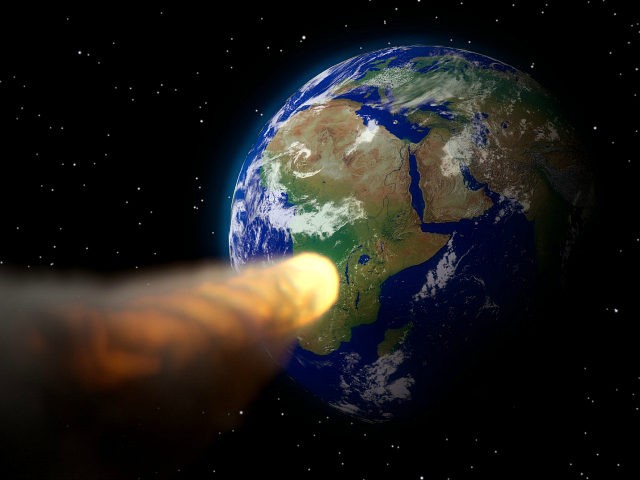Like “a giant asteroid hurtling towards Earth,” climate change is a menace of gargantuan proportions poised to dramatically alter life as we know it, declared an article in the Irish Times Thursday.
Writer Hannah Hamilton, a sustainability consultant, warned that climate change — like a huge asteroid — threatens “to plunge hundreds of millions of people into poverty, hunger and thirst, displace millions more, flood our cities, irreversibly destroy vast swathes of habitat and push untold numbers of wild species into extinction.”
The only difference between climate change and a monstrous falling space rock, Hamilton suggests, is the speed with which it acts. Whereas humanity has evolved to react to “fast-moving threats” such as an asteroid, she declares, we are far less adept at responding to “quantitative slow boils” like global warming.
“Were the impacts of climate change driven by an enormous space rock rather than far less glamorous fossil fuels, the greatest minds of the 21st century would be locked in a desert bunker building giant rockets,” Hamilton proposes.
In the fertile mind of Ms. Hamilton, the “difference between CO2 and asteroids” is purely economic and political because “the global economy doesn’t run on asteroids.”
Ms. Hamilton is, of course, partially correct. If anthropogenic climate change represents any threat to humanity, it is a very slow-moving threat. But this fact is not nearly as insignificant as she would have her readers believe.
Slow, incremental change allows time for something humans do best: adapt.
Last March, Scientific American published one of its most sensible pieces ever on climate change, with the provocative title: “Should We Chill Out about Global Warming?”
The thesis of the essay was very simple: apocalyptic scenarios (think: asteroids) attributed to global warming are simply false, and the human race will almost certainly be able to accommodate whatever “climate change” throws at us.
John Horgan, the director of the Center for Science Writings at the Stevens Institute of Technology, analyzed two reports by “ecomodernists” who reject climate panic and frame the question of climate change and humanity’s ability to cope with it in radically new terms.
Horgan cites Will Boisvert in saying that climate change is merely the “latest episode in humanity’s ongoing conquest of extreme climates,” which will likewise “amount to just another problem in economic and technological development, and a middling-scale one at that.”
Time is, actually, on our side.
The second fundamental error in Ms. Hamilton’s climate alarmism is her misunderstanding of what climate scientists actually know about the future.
Climate change is all about data, she insists. “It’s percentages, degrees, parts per million, lines on graphs, bars on charts. Targets in reports. Dates. Deadlines. Necessarily so, of course, because numbers are the language of data, and data is what drives the science of climate change.”
This is false.
Scientists have no data about future events. They have inherently fallible computer models that drastically simplify the myriad variables that affect weather and climate. From these models, scientists make predictions, imagine scenarios, propose probabilities.
There is a reason why meteorologists only offer ten-day weather forecasts: because there are a million things they don’t know and cannot foresee that can radically alter weather patterns. Making ten-day forecasts is an exercise in modesty as well as in prudence because weather forecasts are notoriously unreliable, even in the very short term, and people’s trust is a fickle thing.
A falling asteroid is only scary when it is real.
Follow Thomas D. Williams on Twitter Follow @tdwilliamsrome.

COMMENTS
Please let us know if you're having issues with commenting.